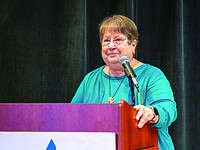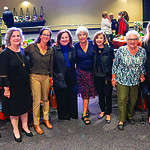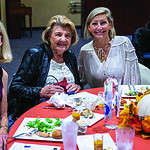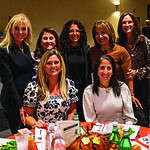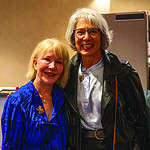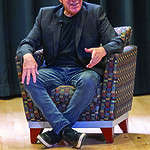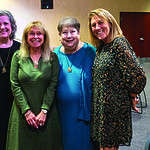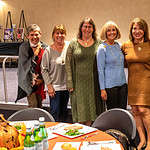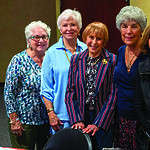What do you get when you put a truly special Israeli artist in front of a room full of amazing Jewish women leaders? A thoughtful discussion on the “art” of community building. Such was the case at the recent United Jewish Federation of Tidewater’s Women’s Lion-Tikva-Chai Lunch held at the Sandler Family Campus.
Barbara Dudley, Women’s Cabinet chair, opened the lunch with a welcome and campaign update. Mona Flax, immediate past Cabinet chair, then recognized the community’s newest milestone givers in the women’s division and called the names of the community’s beloved endowed Lions, of blessed memory (a treasured moment each year during this event).
Following Flax, Janet Mercadante, Honorary Cabinet member (and a past chair), introduced the guest speaker, Israeli artist Shony Rivnay. In a moderated discussion, Mercadante asked Rivnay several questions about his work, his inspiration, his method, and his message. She also asked if the March Mission group from Tidewater might visit him at his Tel Aviv studio while there! His answer: “Yes, please come. I have a large studio and a lot of good wine!”
Mercadante engaged Rivnay in a series of questions, which allowed him to talk about his background and what first inspired him to become an artist—such as watching his father, an entomologist, study insects under a microscope and then draw sketches of what he observed. “These were in the days before digital photography and microscopes which could take pictures for you,” he reminded the audience.
“I was always creative,” Rivnay told the audience. “But watching my father sketch pictures of magnified insects was fascinating to me, and it must have stayed with me for years,” he said. “I think the images and happy memory of sharing that time with my father were what turned me in the direction of art as a career after my army service.”
Rivnay began his career in print advertising and moved to New York City for several years where he worked on Madison Avenue. He and his wife were at that time young parents, and they ultimately decided to return to Israel while their children were still young. Rivnay describes success as an artist in the United States as the ultimate achievement—a dream shared by many Israeli artists, he said.
Rivnay described some insights into his method and how he has progressed as an artist over time, allowing that aging has played a significant role in his work. In response to Mercadante’s question asking him what he is trying to say with his work (noting that the Jewish people generally have storytelling in their DNA), Rivnay replied that the collection currently on exhibit in the Leon Family Gallery (upstairs at the Sandler Family Campus) was a “NO STORY” collection. It was not intended to tell a story at all, but rather to ask the viewer to write his or her own “story” from what they perceive. “Art,” he said, “is not made on the canvas. It is made by the viewer, where the image meets the eye.”
When asked what he hoped his art would do for those who see it, Rivnay responded that he hoped it would ultimately bring people together across artificial boundaries and result in a better world. It was remarkable how close his goals were to those of UJFT: to build and strengthen community at home and ultimately to perpetuate Jewish Peoplehood.
Rivnay’s collection is on display in the Leon Family Gallery through mid-November. It is free and open to all. For more details, visit jewishva.org/leon-gallery.
To learn more about or to become a milestone giver in the Women’s Division, contact Amy Zelenka, UJFT chief development officer, at 757-965-6139 or azelenka@ujft.org.
Photography by Mark Robbins.
–Amy Zelenka


